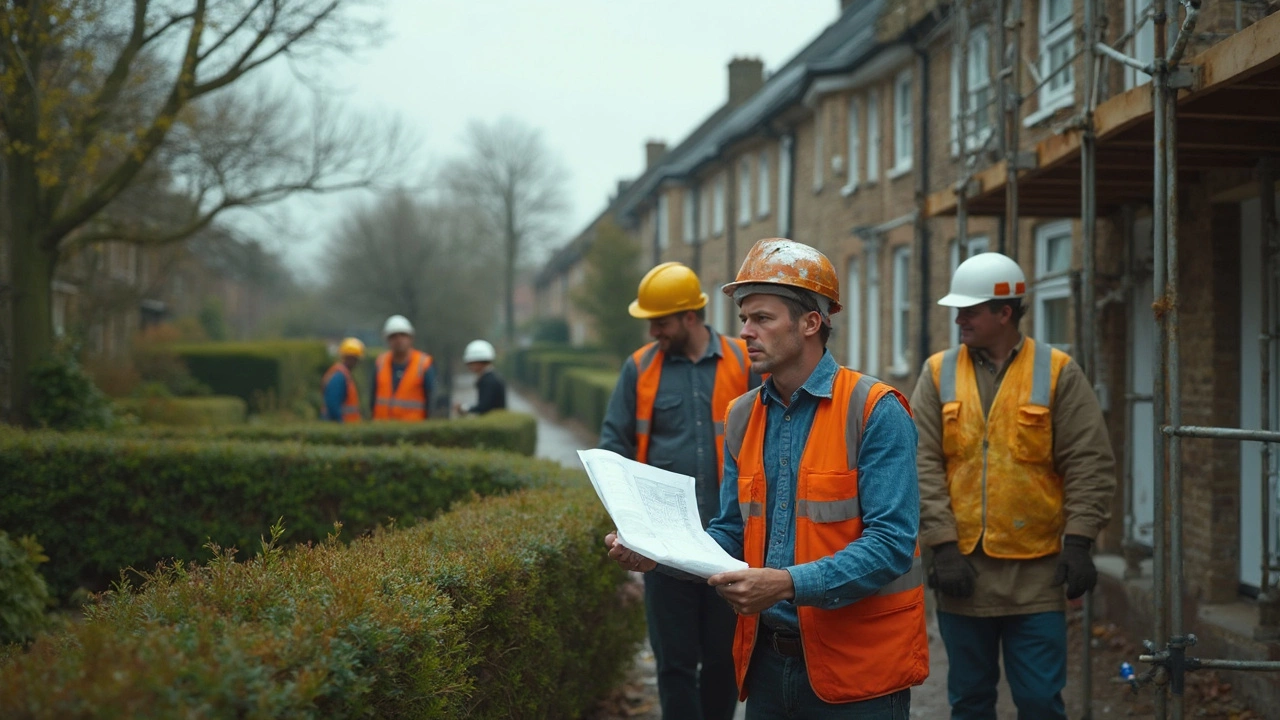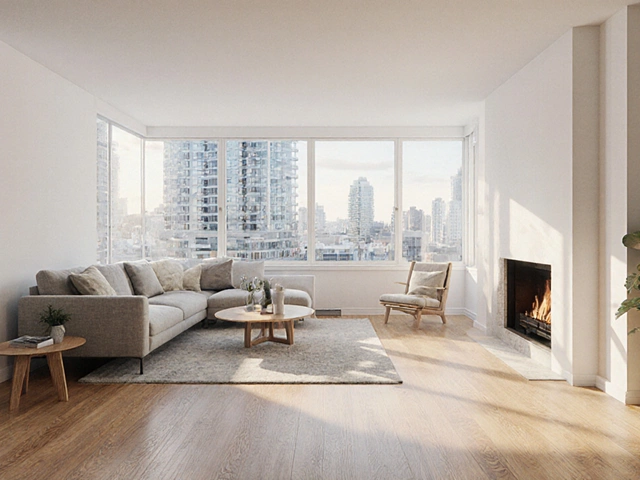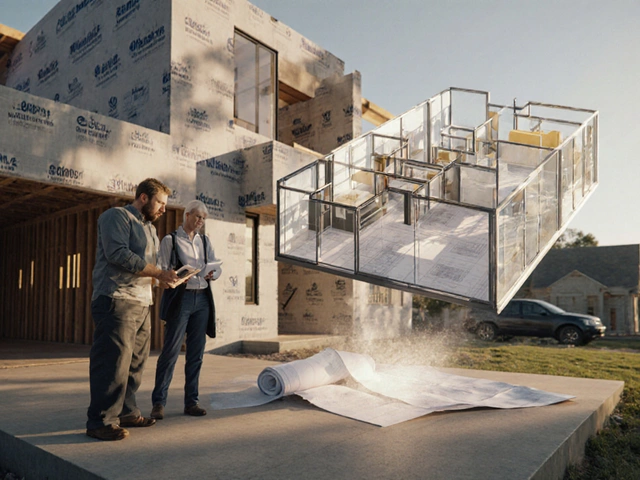If you’ve ever wondered what architects actually do, you’re not alone. A lot of folks picture someone just drawing pretty building sketches, but there’s way more going on behind the scenes. When we talk about architectural services, we’re really talking about everything from coming up with the first scribbles on paper to making sure your project gets built safely, legally, and just the way you imagined.
Think of architects as part artist, part problem-solver, and part project manager. They don’t just pick paint colors or decide where the windows go. They handle building codes, zoning headaches, and can even help you figure out how to stretch your budget without cutting corners. If you skip this step and go straight to a builder, you might end up redoing work or running into serious legal hassles down the road. With the right architectural services, you get a roadmap for your entire build, with fewer surprises along the way.
- What Are Architectural Services Anyway?
- Key Stages in the Architectural Process
- How Architects Help Beyond the Drawings
- Tips for Choosing the Right Architect
- Making the Most of Architectural Services
What Are Architectural Services Anyway?
When people hear "architectural services," they usually just think of someone drawing up blueprints. But in reality, this term covers a whole set of tasks that guide your project from an idea in your head to a real building. The main goal? To make your vision work in the real world, following the rules and staying within your budget.
Architectural services usually include:
- Understanding what you want and need for your space
- Sketching out ideas and creating detailed plans
- Helping you through the maze of local codes, laws, and permits
- Finding smart ways to make the most of your lot or building
- Coordinating with engineers, builders, and inspectors
Some projects—like adding a room or building a whole new house—legally require an architect’s sign-off. Even for smaller jobs, their input can catch design or safety problems before they get expensive. In 2024, about 61% of building projects in the U.S. involved some sort of professional architectural input, according to the American Institute of Architects.
| Service | Who Needs It | When It's Used |
|---|---|---|
| Concept Design | Homeowners, businesses | Early planning |
| Planning Permission Help | Anyone building or adding | Before construction |
| Construction Drawings | Builders, clients | During build |
| Site Visits | Clients, contractors | Throughout project |
Bottom line? If your project is bigger than just painting your kitchen, getting the right architectural help can save time, money, and stress. It’s about more than just lines on a page—it’s your whole build made safer, smoother, and more likely to get approved.
Key Stages in the Architectural Process
Getting a building off the ground isn’t just about hammering nails. There’s a step-by-step flow architects follow to make sure your vision turns into a real, safe space that meets every rule and works for your needs. Here's what you can actually expect from the architectural services process.
- Initial Consultation and Brief: This is where you sit down and lay all your ideas on the table. The architect listens, asks questions, and helps shape your thinking into something that can really work.
- Feasibility Study: Before anyone gets carried away, the architect checks what’s possible. This means looking at regulations, the site itself, your budget, and sometimes even the neighbor’s rights to light. About 80% of planning applications that get thorough feasibility checks are approved the first time, according to the UK Planning Portal.
- Concept and Schematic Design: Here’s where sketches and basic plans come to life. You’ll see options, get choices for layout, and talk about style, all while figuring out if it’s affordable.
- Design Development and Detailed Drawings: With a preferred design in hand, the architect gets super specific. These plans will stand up to picky building officials and keep your builder honest. Every wall, window, and plug socket shows up here.
- Permits and Planning Approvals: Nothing moves forward without proper approvals. An architect sorts out paperwork, deals with your local council, and keeps your project within the law.
- Tendering and Construction Documents: Once the official stuff's squared away, the architect can help you pick a builder and put together a package of drawings and specs so everyone knows exactly what to build.
- Construction Oversight: Architects can stick with you to make regular site visits, check that things are built to plan, and sort out any hiccups. A 2023 industry survey found that 70% of clients who kept their architect involved during construction reported fewer costly mistakes.
If you’re new to building, here’s a simple breakdown of where your time and money go at each phase:
| Stage | Typical Duration | Share of Total Cost (%) |
|---|---|---|
| Design & Planning | 2-6 months | 8-15% |
| Permits & Approvals | 2-4 months | 1-3% |
| Tender & Pre-Construction | 1-2 months | 1-2% |
| Construction & Oversight | 6-18 months | 80-90% |
Each of these steps isn’t just red tape—they’re there to catch mistakes early, save you money down the line, and protect you from bad surprises. If you rush through or skip a stage, things can get ugly fast, from budget blowouts to nightmare renovations.

How Architects Help Beyond the Drawings
Let’s clear something up: architects don’t just make beautiful plans and then disappear. Their job covers way more ground, especially once real work starts. Sure, their drawings look impressive, but their real value kicks in once your project gets rolling.
For starters, architects know the latest building codes and safety rules. These laws change all the time. If you miss even a small detail, you could end up paying for expensive fixes or getting stuck with delays. A good architect keeps your build on the right side of the law, so you don’t land in hot water with inspectors.
They also handle lots of paperwork—permits, approvals, and sometimes even negotiating with the city. Try tackling that mountain yourself, and you’ll see why it’s a headache worth passing on. According to the American Institute of Architects, over 65% of their members spend at least part of their week sorting out permits and regulations.
But that’s not all. Architects can help choose the right materials for looks, durability, and cost. Picking materials isn’t just cosmetic. The wrong choice can push your project over budget or leave you with maintenance problems. Many architects work closely with suppliers, getting better prices or new tech that you wouldn’t even know exists.
They also act as your advocate during construction. If there’s a problem on site or you want a last-minute tweak, your architect can step in and make things happen. It’s easier to change a window size or fix a layout hiccup when you have a pro who understands both the plan and the build.
- Review and recommend qualified builders or contractors
- Oversee construction to check the work matches the design
- Advise on energy-efficient upgrades (could mean lower bills every year)
- Spot ways to squeeze extra value out of your space, like hidden storage or better light placement
And here’s a cool fact: a 2023 industry survey found that projects with full architectural oversight run into 36% fewer change orders (unexpected modifications during building) compared to those without constant architect involvement. Fewer changes usually mean fewer surprises on your final bill.
| Benefit | With Architect Involved | Without Architect Involved |
|---|---|---|
| Change Orders (avg per project) | 2 | 5 |
| Permit Delays (avg days) | 7 | 21 |
| Client Satisfaction Rating (scale 1-10) | 9 | 6 |
The bottom line? Architectural services go way past fancy drawings. Having an architect stick with you from planning through the final nail can save money, cut down stress, and help dodge mistakes that haunt you for years.
Tips for Choosing the Right Architect
Finding the right architect makes a massive difference in how your project turns out. Don’t just go with a friend’s cousin or pick one because they’re nearby. Start by checking if they’re registered with an official body—like the American Institute of Architects (AIA) in the US or RIBA in the UK. Registration shows they’re legit and follow strict industry standards, which helps you avoid cowboy operators.
Take a close look at their past work. Most architects will have a portfolio loaded with projects. Find examples similar to what you want—like a house extension, a new restaurant, or retrofitting an old building. This proves they understand your type of project and aren’t just winging it. If you’re after energy-efficient design or unusual materials, ask for their experience with those specifically.
Don’t skip the interview step. Sit down with two or three architects, even if it’s a video call. You’ll see if they listen, communicate well, and explain things without loads of jargon. Ask them how they handle budget hiccups, planning permission problems, and schedule delays. Bonus points go to anyone willing to walk you through their process from idea to finished building without sounding like a robot.
- Always ask about fee structures. Some charge a percentage of your total build, others use fixed fees. Get it in writing—surprise bills after the fact are the worst.
- Check who in the office will actually handle your project. Sometimes you'll meet the boss and then work with a junior employee. Make sure you meet your main point of contact upfront.
- Request references you can actually speak to—not just a list of names. Genuine reviews can reveal how your architect handles real-world snags.
- Be clear about your expectations from the start. The more direct you are, the less likely you’ll end up frustrated later.
When you pay for architectural services, you want someone who can cover the details you miss—and keep your stress level in check. Don’t rush this decision. Choosing carefully now saves you money, arguments, and awkward phone calls later.

Making the Most of Architectural Services
Getting the best out of your architect isn’t just about hiring someone with a cool portfolio. It’s really about teaming up and knowing what you want out of the process. Clarity wins every time. Be super clear about your goals and budget right from the start, even if you’re not exactly sure about every detail yet. The more specific you are, the easier it is for your architect to create something that fits the bill without any nasty surprises later on.
Communication is your secret weapon. Schedule regular check-ins, ask questions, and don’t be shy about sharing what’s working for you and what’s not. If you spot something you don’t understand in a design, say so. Great architects love feedback—after all, this is your future home or business on the line.
Want to avoid big roadblocks? Make sure you get everything in writing, especially when it comes to costs, responsibilities, and timelines. A written agreement should lay out the scope of architectural services, so you and your architect are on the same page about who handles planning permissions, engineering, or dealing with contractors. More transparency means fewer headaches as the project moves forward.
If you’re looking to save money or just get more value, don’t just focus on the price of drawings. Architects often know clever ways to make the most of your space or materials. For example, they can suggest layout changes to catch more sunlight or open up cramped areas—little tweaks that make a huge difference over time.
- Set out your must-haves and nice-to-haves before you meet with any architect.
- Keep a folder (even just digital photos) of styles and features you like.
- Review your agreement carefully, especially the list of what’s included and extra costs.
- Ask your architect how they’ll help manage the construction side—some will visit the site, others won’t unless you ask.
- Don’t be afraid to talk budget. Architects appreciate honesty and can help you build smarter, not just bigger.
By being organized, clear, and open right from the start, you’ll get way more out of working with an architect—not just in the end result, but all through the process.








